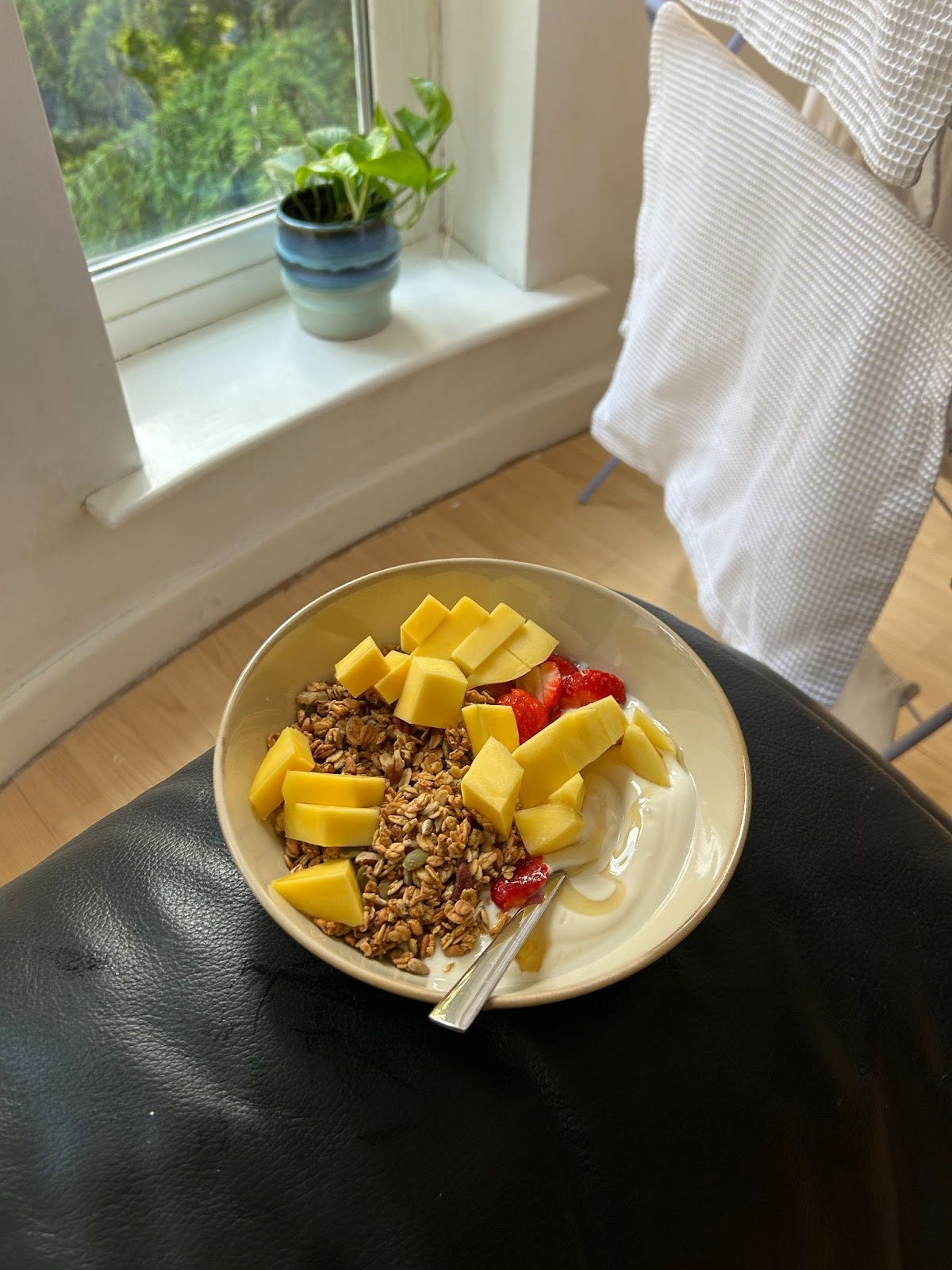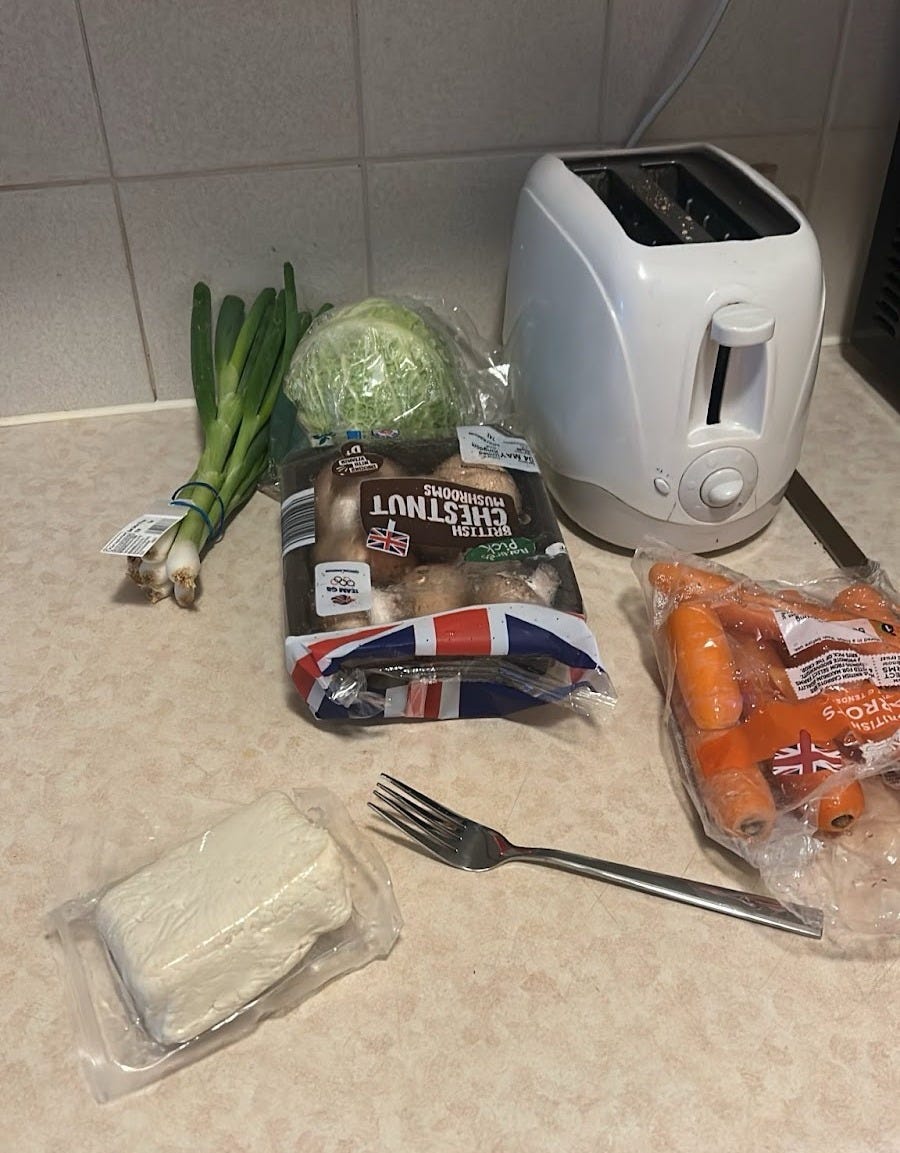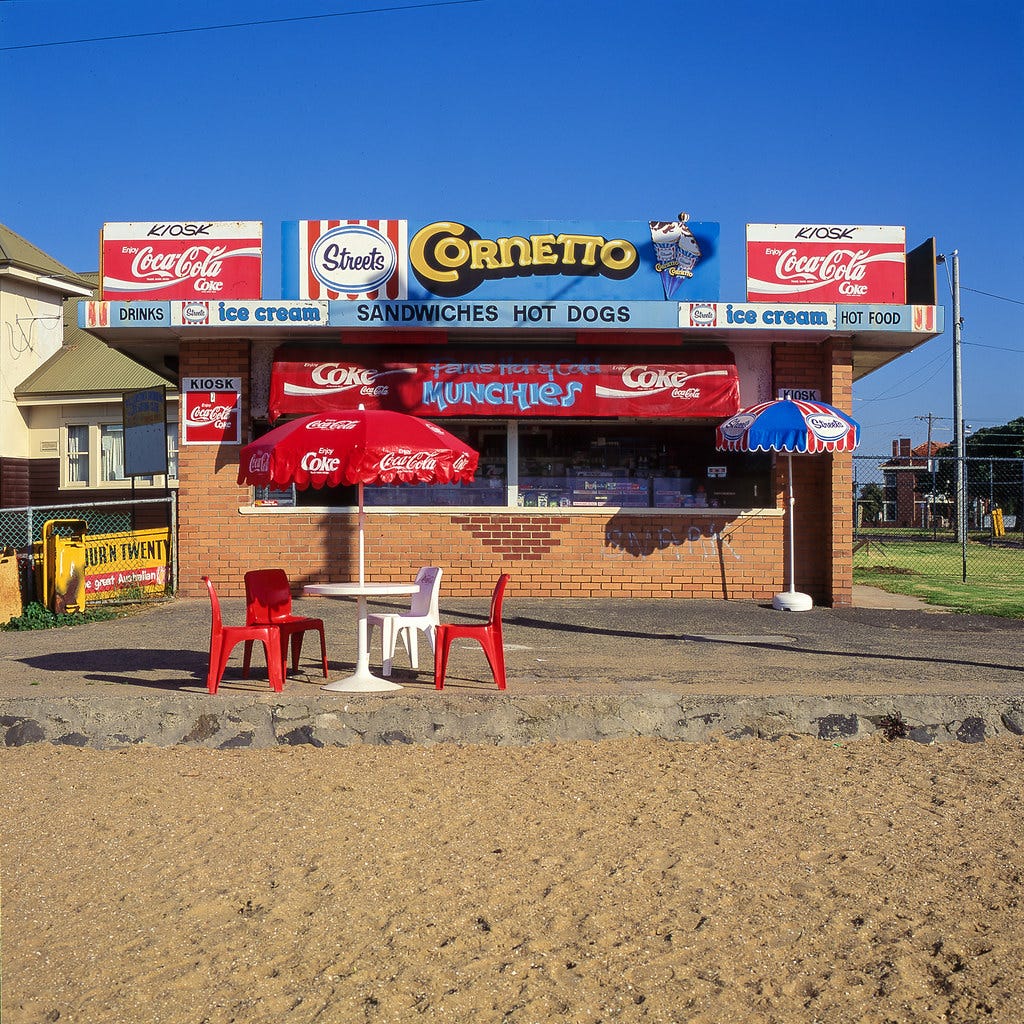A heads up: I discuss diet and disordered eating.
Hello from my dinky little one-bed apartment in Manchester! The squad has now completed our aerobic block and transitioned into speedy track work (my favourite). My body is starting to wake up just in time for me to catch yet another cold. I’m snorting out disturbing quantities of yellow mucus. But hopefully, now that I’ll be settled in one place for a while, I won’t be exposed to so many bugs. Pending recovery, I’ll be competing at the end of May and will finally be able to write about what I’m here for: racing. I’m feeling the usual hourly fluctuations of excitement and self-doubt that precede the start of the season.
I’ve been thinking about the complicated relationship between athletes and food.
My body composition has changed over the last few months. I look a bit scrawny, god forbid, which has brought up some confusing emotions. Since I’ve made very little change to my diet, which is guided by dieticians at the Victorian Institute of Sport, I’m going to assume this has happened mostly because of the change in my training program since joining M11.
I don’t weigh myself or take skinfold measurements any more, because I reached a point where this data felt less useful than factors like perceived energy, training/racing performances, menstrual regularity etc. Right now, so far so good, but I remain vigilant – especially with my recent string of viruses.

Looking at body data fired up some neural pathways that have lain dormant for almost a decade now. I’m happy to sell my trauma for money and clout (see: this newsletter) but, without getting too gory about what I did to my body between 12 and 22, just imagine a sporty but shy little Asian girl with an inner world inexplicably consumed by cosmic violence.
They really let you get away with all kinds of mental illness if you get good grades.
My eating disorder recovery was intertwined with my transition into a professional athlete. I untethered food from appearance and transformed it into a tool for my body to use. Great, right?
Wrong. My brain went the whole hog, entirely dissociating my sense of self from my body. In other words, there was a time where I felt that my body was its own entity. “I” (my brain, I guess) was just the caretaker. This even made it difficult to accept my achievements on the track, because it felt like something/someone else did it for me.
Gradually over the years my body and brain unified again, working with dietitians and psychologists, and just from becoming older and kinder.
Nowadays, food exhausts me. Eating is a chore. I have to plan, shop and cook all while training full-time, when what I really want to do is sleep and play Cozy Solitaire. This is a common sentiment among my fellow athletes. Intense exercise, heat, fatigue, anxiety – all these kill appetite. Several people have commented on my off-putting protein shake drinking technique: I announce to the room “time for my medicine” and chug it in one go.
Food is also expensive. When I look at a menu I’m the math lady meme, figuring out the most nutritious and cheapest option. Oh, and I don’t eat meat, so I’m the freak who has to bring a block of raw tofu to the 5-star Diamond League meet hotel buffet, because even in 2025 they don’t have plant protein options.

Hope this discussion has been enlightening even if it doesn’t offer any answers. When I wrote about my eating disorder in the past, it was painfully sincere and didactic and I tried to find a positive spin (“no babe, don’t kill yourself, the suffocating torment of being alive is all worth it because it makes you more empathetic!”). Post-covid, the stigma of mental illness has lost a lot of its power. “Anyone can be mentally ill now,” Dan Rath has said. “It used to only be for women and nerds.” In this landscape, my take is that the conversation should be weird, incomplete, and unapologetic, just like any other complicated human experience.
Track of the week: Food at the track
A hard tonal shift here but still on topic: the phenomenon of food in sporting venues. Food and drink is an integral part of the sporting experience both as spectator and performer. Tuck shops, club house canteens, concession stands and tailgate BBQs are important amenities at sporting events and infrastructure.
Eating also adds to the sensorial experience of a place. There’s obviously taste, but smell has the power to permeate all around. When you walk through a stadium, at some point you will encounter the disembodied waft of fried food. Even mid-race, when an athlete passes a certain part of the track, they can get a whiff of the food stands. Smell and memory are powerfully linked. The smell of hot chips or burning sugar can transport you into your child body, wet hair dripping down your neck, bare feet on cold tiles, waiting in line for the tuck shop after swim training.

I find that the fancier the venue, the more generic and expensive its food offerings.
One footy nut and tuck-shop savant wrote an article for the Guardian describing the food he ate at over one hundred football stadiums in Australia. Football clubs with ties to specific nationalities, like the Bosnian-run Springvale City at Ross Reserve in Melbourne, offered specific dishes – like the author’s favourite ćevapi, which “transported [his mouth] to Sarajevo for the evening”. Ignoring the rage this man’s existence provokes in me, he does have a point. Food, like design, is more engaging when it responds to a place or a story.

I’m always wondering how we can popularise track and field and similar to what I said in the last issue about how thoughtful landscaping can make running part of the outdoor leisure experience, food can play a role as well. An athlete I’ve previously interviewed affectionately described the raised café along one of the bends at St Mary’s Track in London. Her mum, who had little knowledge of running, could enjoy a coffee while watching her daughter train.
My local track in Melbourne, George Knott Reserve, is located in the chic suburb of Clifton Hill. Why not attach a café to the clubhouse? It would add to the sensorial experience, provide a revenue stream and potentially act as a way to introduce the general public to running. Maybe it could even siphon some of the consumer-centred distance-running boom into track and field through expensive hot drinks and exposure to good-looking track runners wearing head-to-toe Nike. On a Saturday morning the track is heaving with both amateurs and Olympians. A hot yuppie couple walking their cavoodle through Yarra Bend could stop in, buy a $6 flat white, and watch the beautiful bodies sweat.
A sketch of … Potch track cat for my best friend Brad
Sorry to anyone who made the assumption that their friendship meant anything to me. The only person who I really care about is Brad Harvey, because so far, he’s the only one who has subscribed to the Best Friends tier of this newsletter. He also happens to be the friend I’ve known the longest – we met at Melrose High School when we were 12, though we didn’t become friends until years later, because at that time he was an insufferable cool kid and I was an ugly nerd.
At his request, I’ve drawn the cat that hung out at the grass track in Potch.
Brad is the dad of two beautiful cats, Archie and Goose. This particular cat had a collar but no name tag. She (all cats are girls) stretched out on the path between our hotel and the gym/track, waiting for attention (relatable).
In the coming weeks I’d like to post a bonus Q&A newsletter. Please send through your questions via email, Substack, or this anonymous form.
Thank you to all subscribers. Paid subscriptions support my running career. If anyone is interested in sponsoring me or being a benefactor, please send me an email. Let’s discuss a creative partnership!







